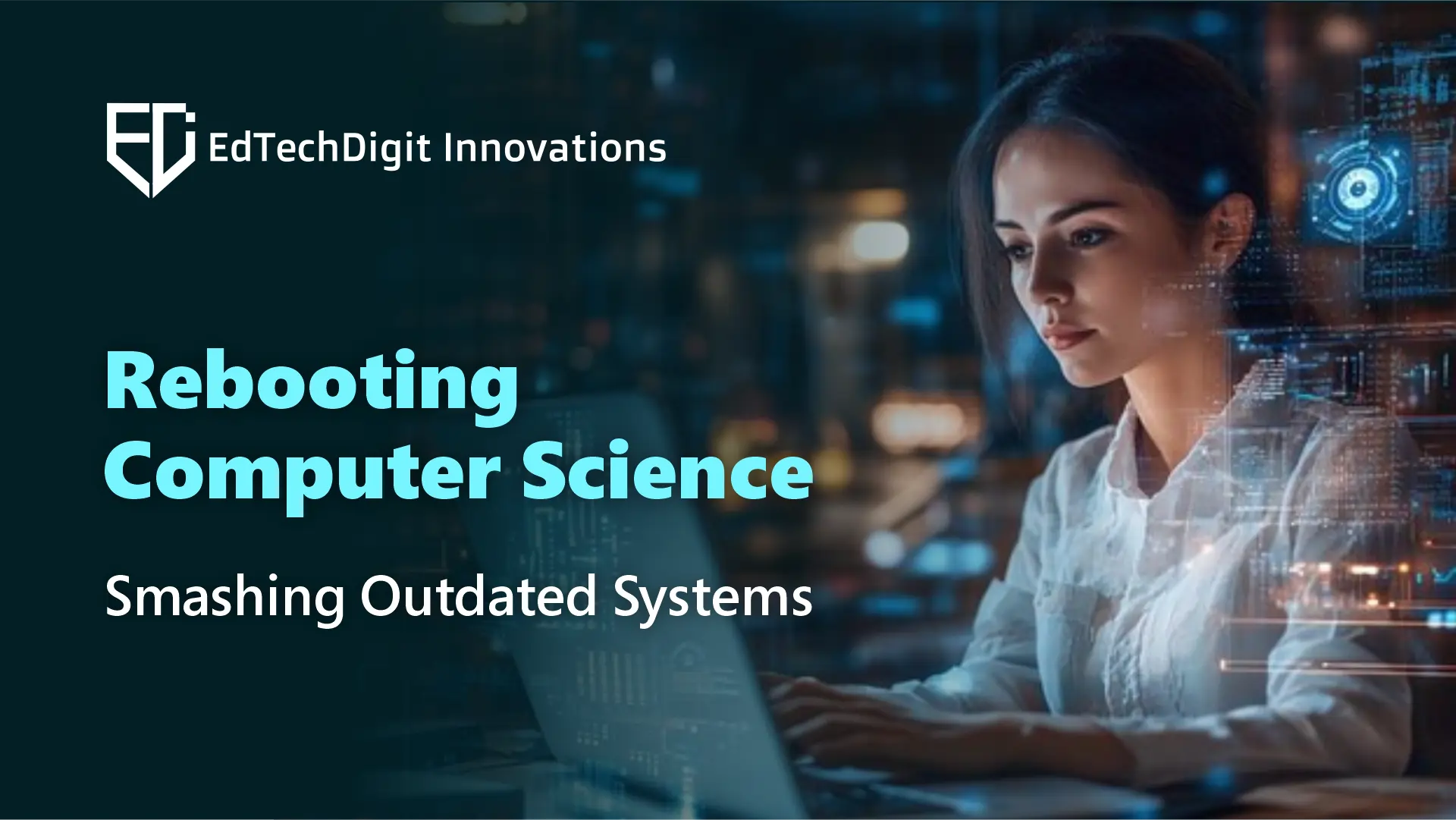Computer Science is a blend of computation, automation, and information. K12 education has grown beyond the bounds of classroom. It has become a norm to deploy smart AI technology in the classroom to bring it to life. Aspirants planning it big in the technology education needs to be upbeat with the latest and the emerging in the domain. This read shall offer beyond possible advancements that you must expect to be visible anytime soon.

Living up to the expectations is what keeps the industry ramping up every time. Evolution is the norm in technology education, and you as a participant cannot tend to ignore even a bit of it. Over the years, the computer science education has showcase tremendous promising aspects that are expected to appear in the future and are pulling up the present as well. Let us look at some of the top trends in computer science sect.
- Artificial intelligence and Machine learning
- Cybersecurity
- Quantum computing
- Internet of Things (IoT)
- Cloud computing
- Blcokchain technology
- Human-Computer interaction
With these nuanced technology trends making their way into the computer science domain; the need of the hour is to amplify your competencies accordingly. Transforming global computer science education has been pivotal in understanding what can be expected of the younger adults as per the emerging skills pool. Making them more technology-centric, technology in the classroom has become more simplified and user-friendly.
A simplified version of this recent wave of evolution has been demarcated by Code.org 2025 Goals. Let us explore them in detail below.
-
Computer Science Movement Goals
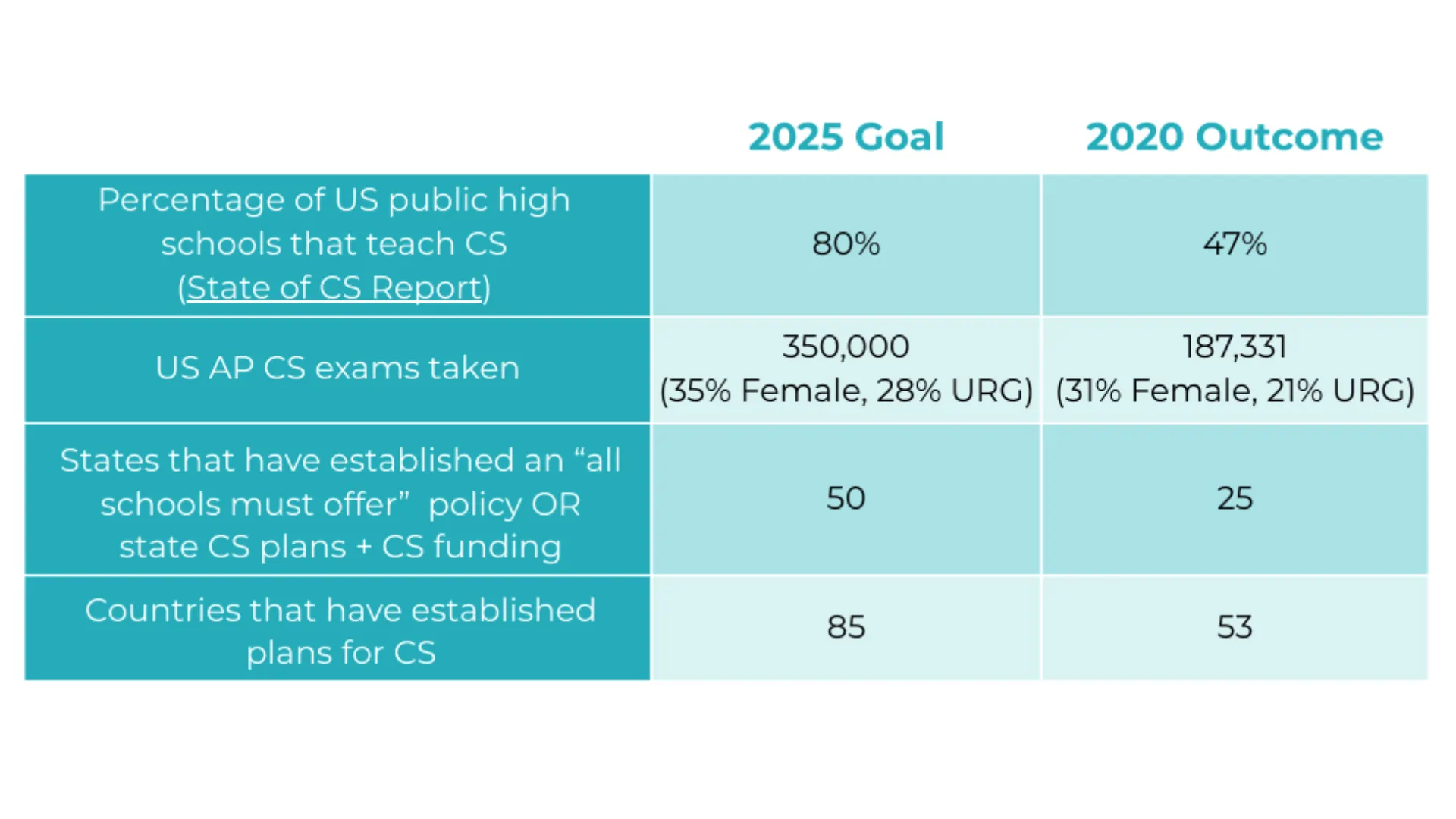
School districts, state education agencies, and other organizations in the computer science community look to Code.org as a leader of the computer science movement; to set example through action and report on the progress the community is making towards broadening access and participation in computer science.
-
Botton Line Goals
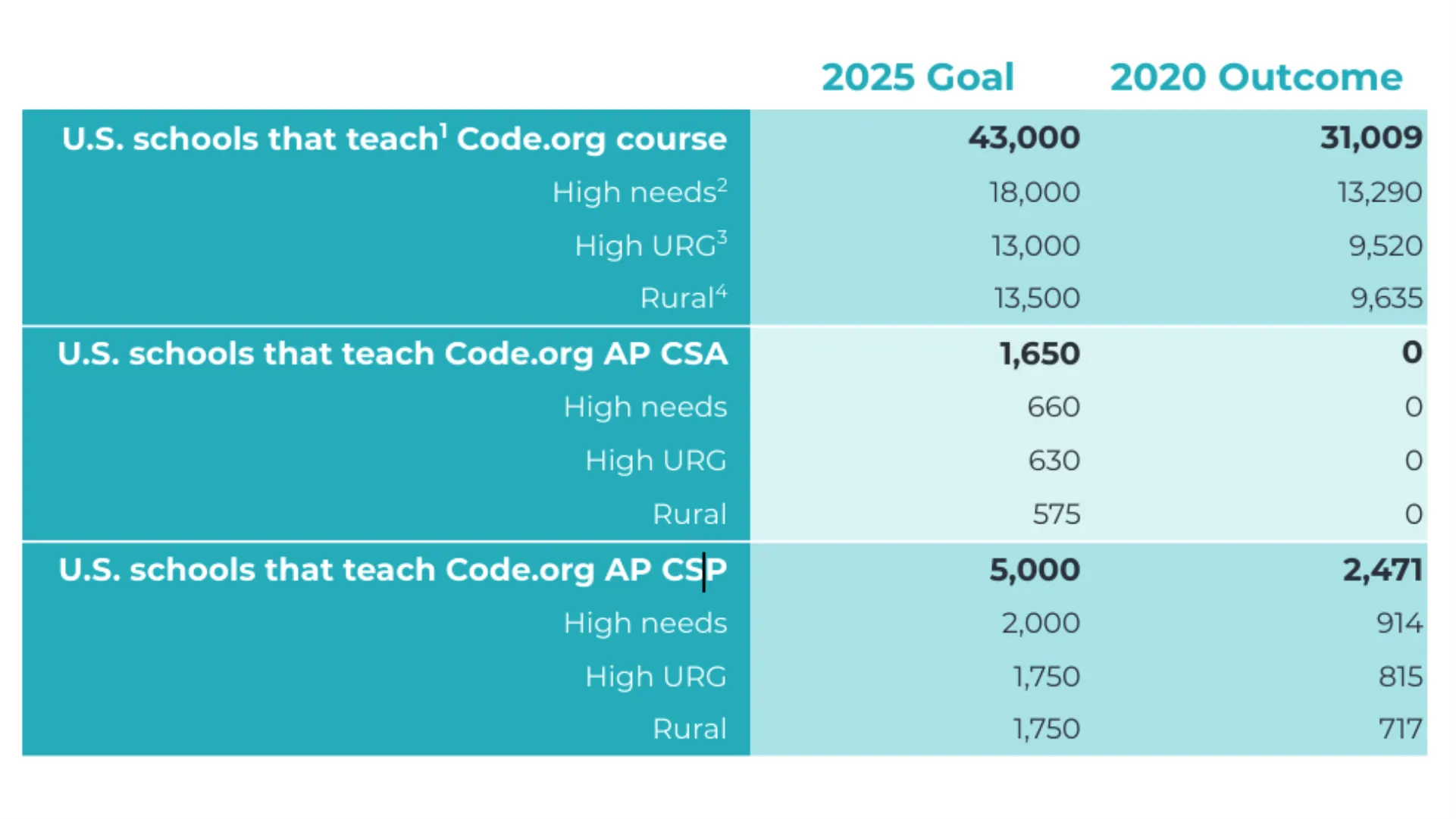
These specific targets represent ambitious progress towards increasing access, participation, and performance in computer science through 2025; achieving them will require significant cumulative efforts.
-
International Goals
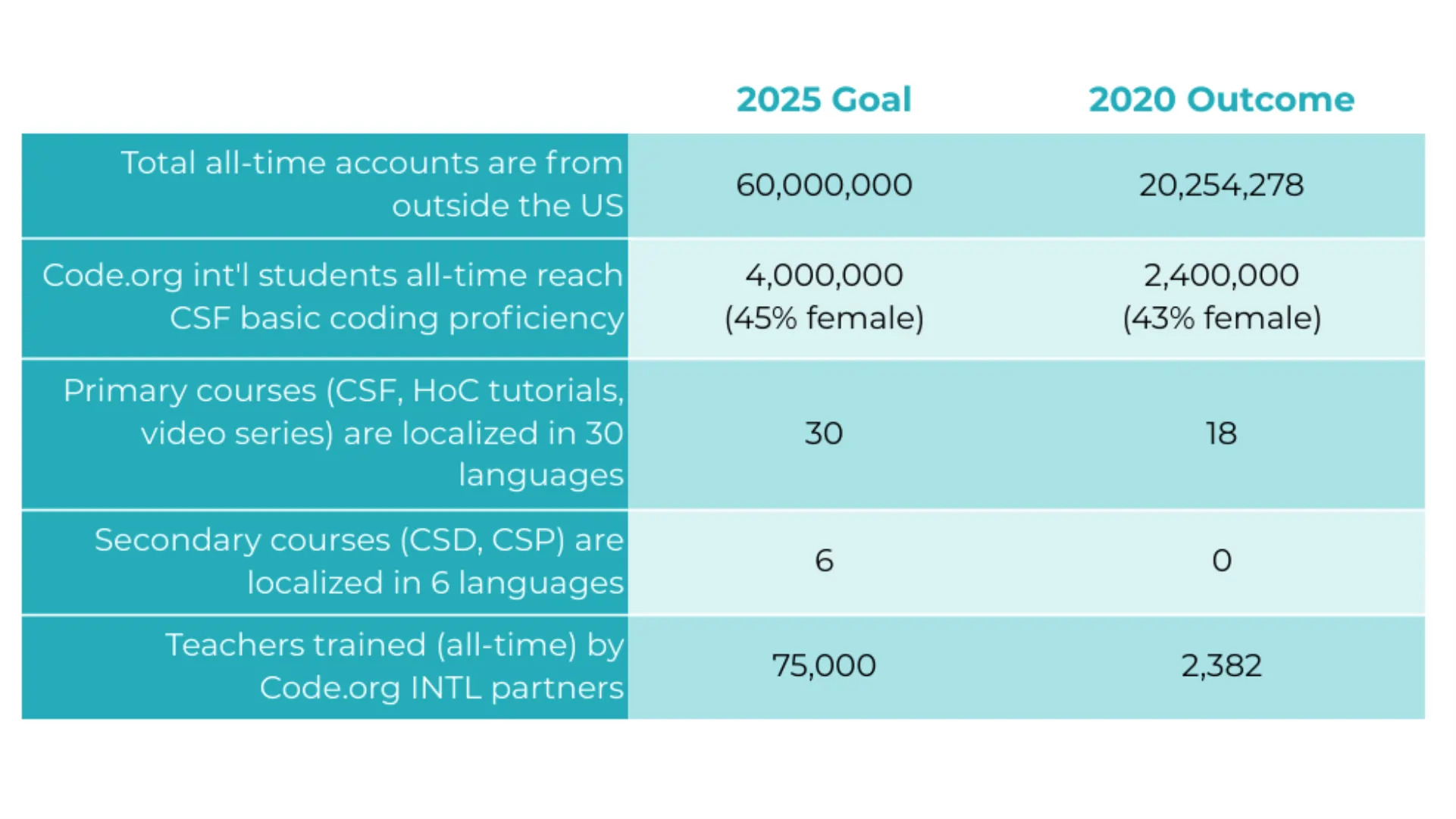
These numbers showcase that we need to strengthen our distribution channels to drive more penetration by evolving the capabilities of the platform. Partnering with the government agencies and other organizations to bring computer science into the classrooms, it has prioritized developing professional learning models to drive a more scalable and sustainable impact globally.
-
Diversity Goals
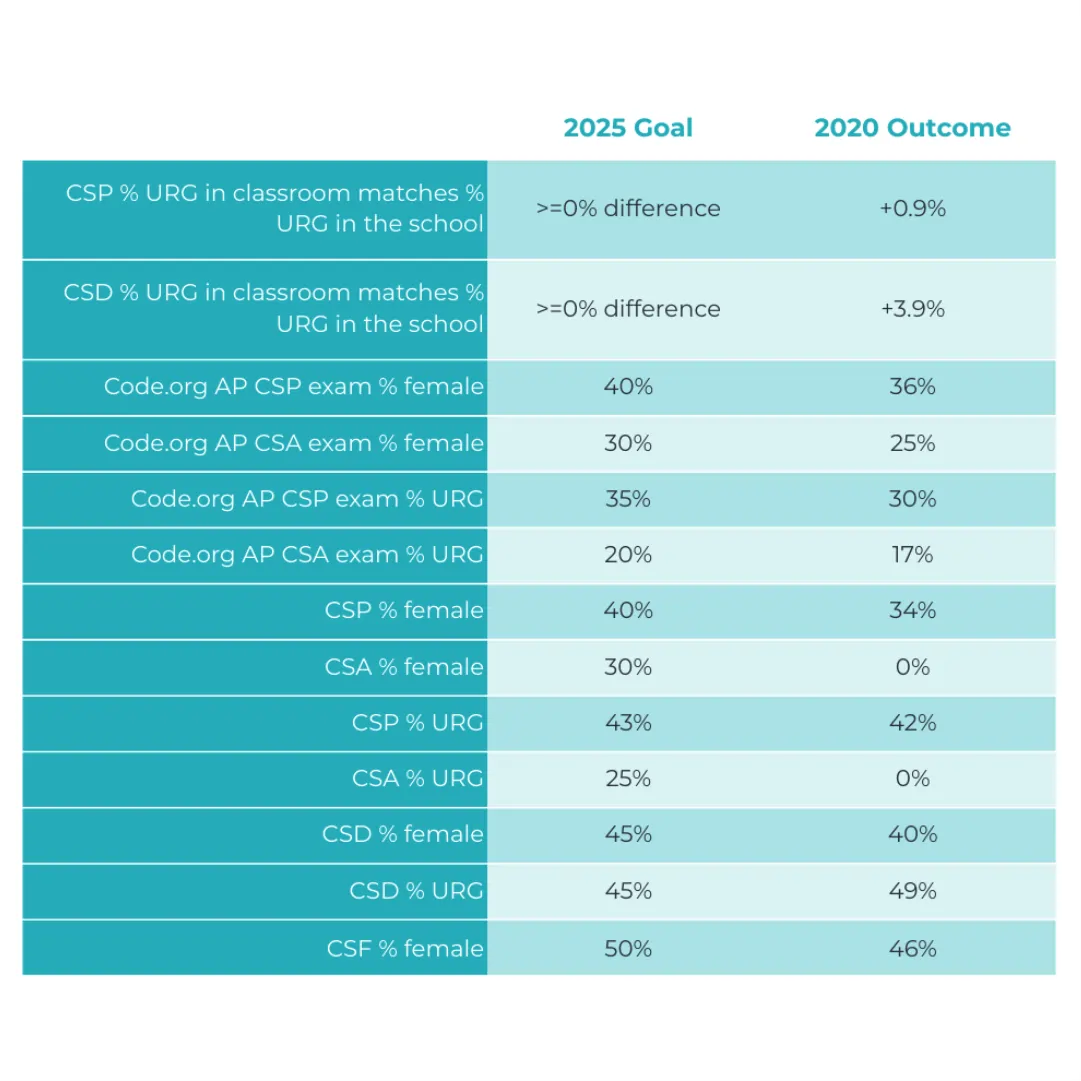
The diversity benchmarks showcased in the above representation highlights that computer science education has never attained at this scale, exemplifying the commitment to diversity.
Having described them in detail; there is still a chance that leaves the door open for the hiccups and challenges met by computer science education domain. Let the spotlight be at them.
Hiccup 1: Awareness Deficit Industry
Modernizing education needs to be about more than bringing educational technology to the classroom. It must be about bringing technology education to the classroom itself.
Hiccup 2: Lack of Specialized Classes
Computer science being a broad umbrella term; it needs its space under the sun. That being said; it lacks enough offering. Coding, programming, robotics, computer graphics, data analytics- these constitute the modern-day computer science. Just think of how many schools today offer these domain specializations across K12 education in their curriculum. There you are- Hence the need!
Hiccup 3: Need for Parent Advocacy
Schools are not the only ones to be blamed. Parents are equal party to the same as they hold half the responsibility of pushing their wards toward technology, computer sciences, and much more. More parents’ fraternity must vote for computer science education in schools across ages.
Hiccup 4: Scarcity of Resources
With Google, NVIDIA, IBM, and other tech giants working their nights round to bring forth an astounding AI innovation in education and technology at large. Still, the schools and educational institutions lack resources to deploy computer sciences; for the mere reason of lack of affordability and high initial cost of deployment. This restricts the smooth designation of technology in schools and paralyzes the usage of the same by our young adults for the future of work.
Hiccup 5: Need Solution-based Education System
With multiple challenges being faced by K12 computer science education; it is time to assign and deploy more people to find long term solutions.
Future of Work in Computer Science Education
There is no doubt in the fact that the scope of computer science has significantly evolved over the years. Expanding it to diverse industries and sectors; computer science education needs more thrust at the school education level as well. Looking at the astounding industry applications that this widely popularly education stream has; it is time it got its due share. With artificial intelligence, machine learning, neural networks, robotics, and agentic AI bringing in much force in the computer science domain. The schools and education system needs to open up to embrace it with all heart. Overcoming the hurdles and paving the way for a multifaceted technology education in the classroom; schools, technology partners, K12 learners, and parents must join hands to bring forth a greater technology-led future for the greater good. Let us take the first step now!

